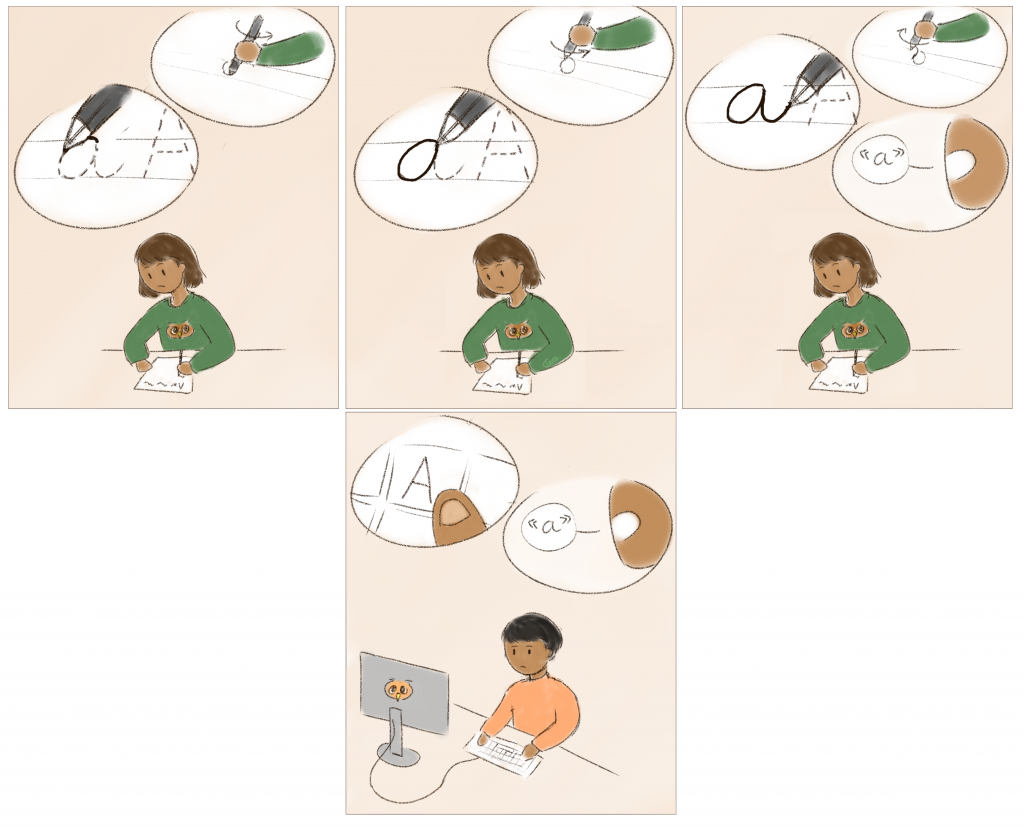Do we need to teach handwriting these days?

Most of the writing we do these days, from emails to reports to tweets, is on a keyboard. It can seem intuitive to also start with the keyboard when teaching a child to write. Typing looks so much easier to do than handwrite. Just think of a child’s clumsy movements with a pen.
Handwriting however supports reading and writing skills in a way that typing does not. Typing on a keyboard is simple letter or character identification. It is the same kind of practice as asking a child to point to a letter on a paper or draw a letter card from a deck. Handwriting also requires making the movement to write a letter or character stroke. These hand movements are important for learning to recognize letters and characters in the first place. So, learning to handwrite will help a child learn to read, and to type!
Handwriting is just one additional way to reinforce letter or character learning. Handwriting, however, can be quite difficult (see Can reading be taught through movement?). This is especially true for very young children and children with motor difficulties, like dyspraxia. It is best to complement diverse kinds of writing practice, and remember that there isn’t just one way to learn to write!
The scientific sources for our comic:
Bonneton-Botté, N., Guilbert, J., & Bara, F. (2019). L’écriture manuscrite: un apprentissage moteur spécifique. ANAE-Approche Neuropsychologique des Apprentissages Chez L’enfant.
In collaboration with Dr Jessica Guilbert
